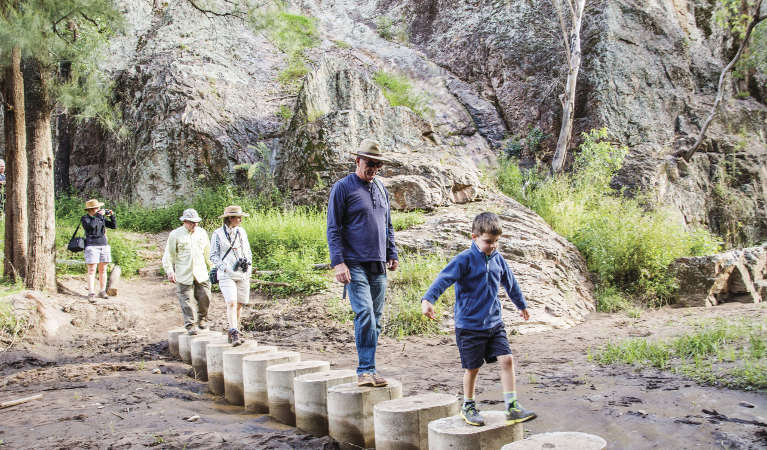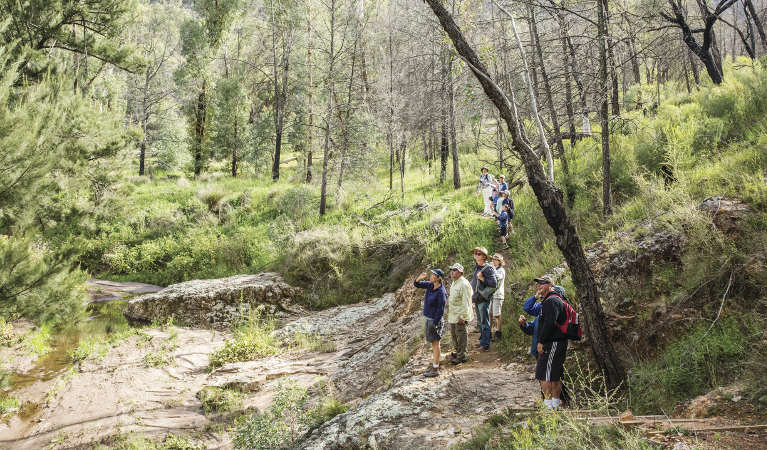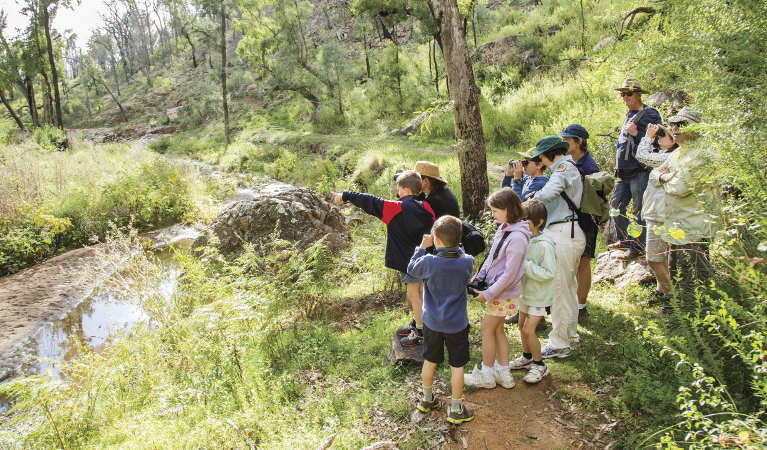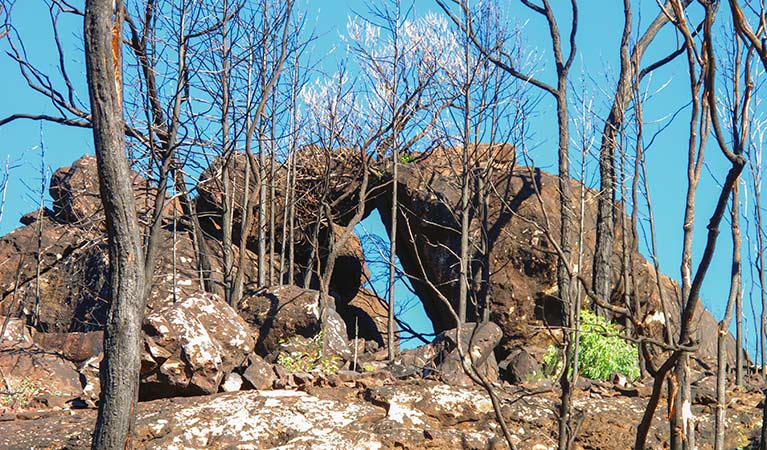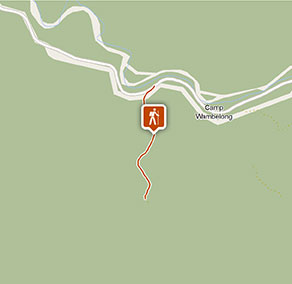Overview
Burbie Canyon walking track in Warrumbungle National Park offers a gentle 2km stroll through a sandstone gorge, and is particularly popular for birdwatching.
- Where
- Warrumbungle National Park in Country NSW
- Accessibility
- Hard
- Distance
- 2km return
- Time suggested
- 30min - 1hr
- Grade
- Grade 3
- Entry fees
- Park entry fees apply
- What to
bring - Drinking water, hat, sunscreen
- Please note
- Remember to take your binoculars if you want to go birdwatching
- There is limited/no mobile reception in this park
Avid birdwatchers will love Burbie Canyon walking track, which offers a gentle 2km stroll past a creek and through a narrow sandstone gorge. Indeed, the birdlife is so varied here, you can’t help but go birdwatching, trying to spot peregrine falcons nesting in hollows of the rock-face, or rare turquoise parrots darting overhead. This is a terrific track for families and kids as well.
Though Burbie Canyon walking track is good to visit at any time of year, spring is particularly beautiful, surrounded by an abundance of wildflowers like the common parrot pea, guinea flower, and five corners, a popular bushfood. Bring the camera and enjoy the stunning ambience of the native forest.
This is also a great place to see swamp and red-necked wallabies, and, if you’re particularly lucky, you may even spy a koala dozing in a eucalyptus tree.
Take a virtual tour of Burbie Canyon walking track captured with Google Street View Trekker.
Google Street View Trekker
Using Google Street View Trekker, we've captured imagery across a range of NSW national parks and attractions. Get a bird's eye view of these incredible landscapes before setting off on your own adventure.
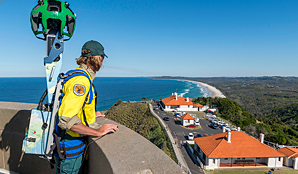
Conservation program:
Warrumbungle National Park after-fire program
The 2013 bushfires were the largest and most intense on record for Warrumbungle National Park. Almost 90 per cent of the park was burnt, but conservation programs and research have helped us better understand the impact of fire and how the park has recovered.
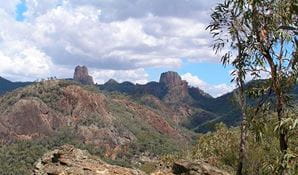
General enquiries
- National Parks Contact Centre
- 7am to 7pm daily
- 1300 072 757 (13000 PARKS) for the cost of a local call within Australia excluding mobiles
- parks.info@environment.nsw.gov.au
Operated by
- Warrumbungle NP Visitor Information Centre
- 9am to 4pm daily. Closed Christmas Day.
- 02 6825 4364
- warrumbungle.np@environment.nsw.gov.au
- 4261 John Renshaw Parkway, Warrumbungle NSW 2828
Park info
- in Warrumbungle National Park in the Country NSW region
Warrumbungle National Park is always open but may have to close at times due to poor weather or fire danger.
-
Park entry fees:
$8 per vehicle per day.
Buy annual pass
What's nearby:
Things to do (29)
- Aboriginal culture (2)
- Adventure sports (1)
- Birdwatching and wildlife encounters (9)
- Educational activities (1)
- Historic heritage (1)
- Picnics and barbecues (2)
- Road trips and car/bus tours (2)
- Sightseeing (17)
- Swimming (1)
- Visitor centres (1)
- Walking (20)
- Wildflowers (seasonal) (10)

